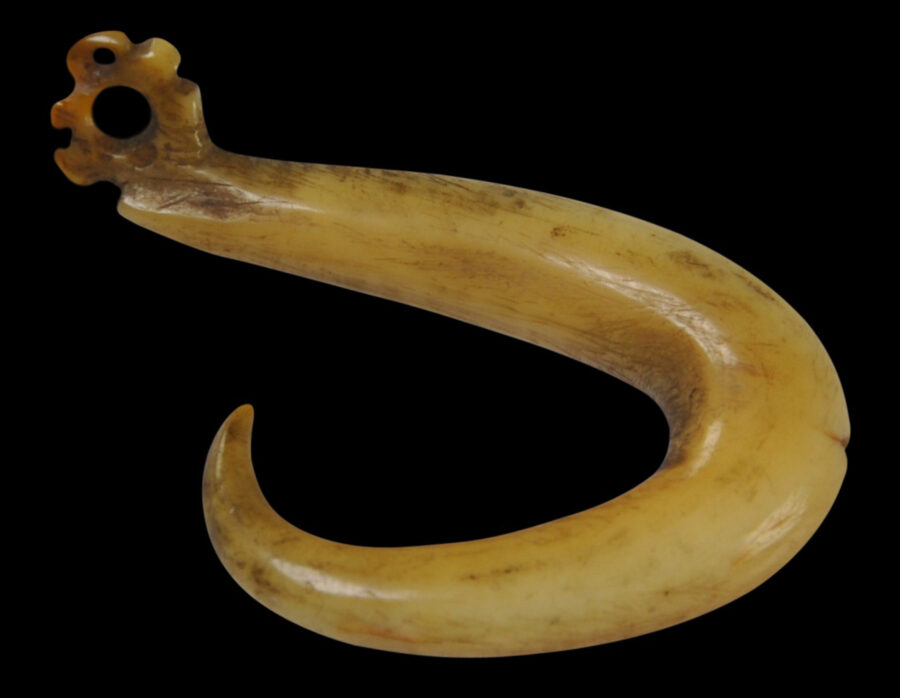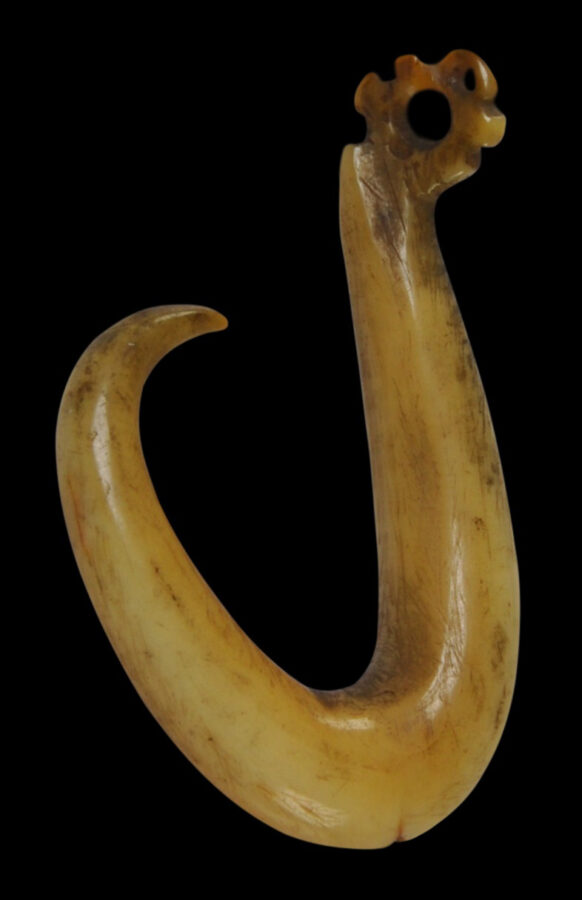This elegant hook to catch either a large fish or a small shark has been carved from a single piece of bone (possibly whale bone), with a larger and a smaller eye surrounded by notched edging.
There is a small, crevice at the bottom-side of the hook here, which allowed the line to be better secured.
The hook was catalogued by the previous collector as coming from the Society Islands, in French Polynesia. Hooks from this area are of this form. However, some hooks from the Maori people of New Zealand some similarities.
The bone has a varying, creamy patina from significant age and handling.
Fish hooks were used for both their intended purpose around Oceania, but also as jewellery, to be worn on necklaces around the neck. Elements of necklaces often were carved to look like fish hooks too. As such, the hooks themselves were fertility and prosperity symbols.
It is a fine hook, with wonderful sculptural form, and a lovely, honeyed patina.
(More images are below. Also, see more Oceanic art.)
References
Blau, D., & K. Maas, Fish Hooks of the Pacific Islands, Hirmer, 2012.
Brunt, P., & N. Thomas, Oceania, Royal Academy of Arts, 2018.
Grulke, W., Adorned by Nature: Adornment, Exchange & Myth in the South Seas, At One Communications, 2022.
Herle, A. & L. Carreau, Chiefs & Governors: Art and Power in Fiji, Museum of Archaeology and Anthropology, University of Cambridge, 2013.
Hooper, S., Pacific Encounters: Art & Divinity in Polynesia 1760-1860, British Museum Press, 2006.
Hooper,. S., Fiji: Art & Life in the Pacific, Sainsbury Research Unit for the Arts of Africa, Oceania & the Americas, 2016.
Kaeppler, A. L., Polynesia: The Mark and Carolyn Blackburn Collection of Polynesian Art, University of Hawaii Press, 2010.
Neich, R., & F. Pereira, Pacific Jewelry and Adornment, University of Hawai’i Press, 2004.
Starzecka, D. C., R. Neich & M. Pendergrast, The Maori Collections of the British Museum, British Museum Press, 2010.








